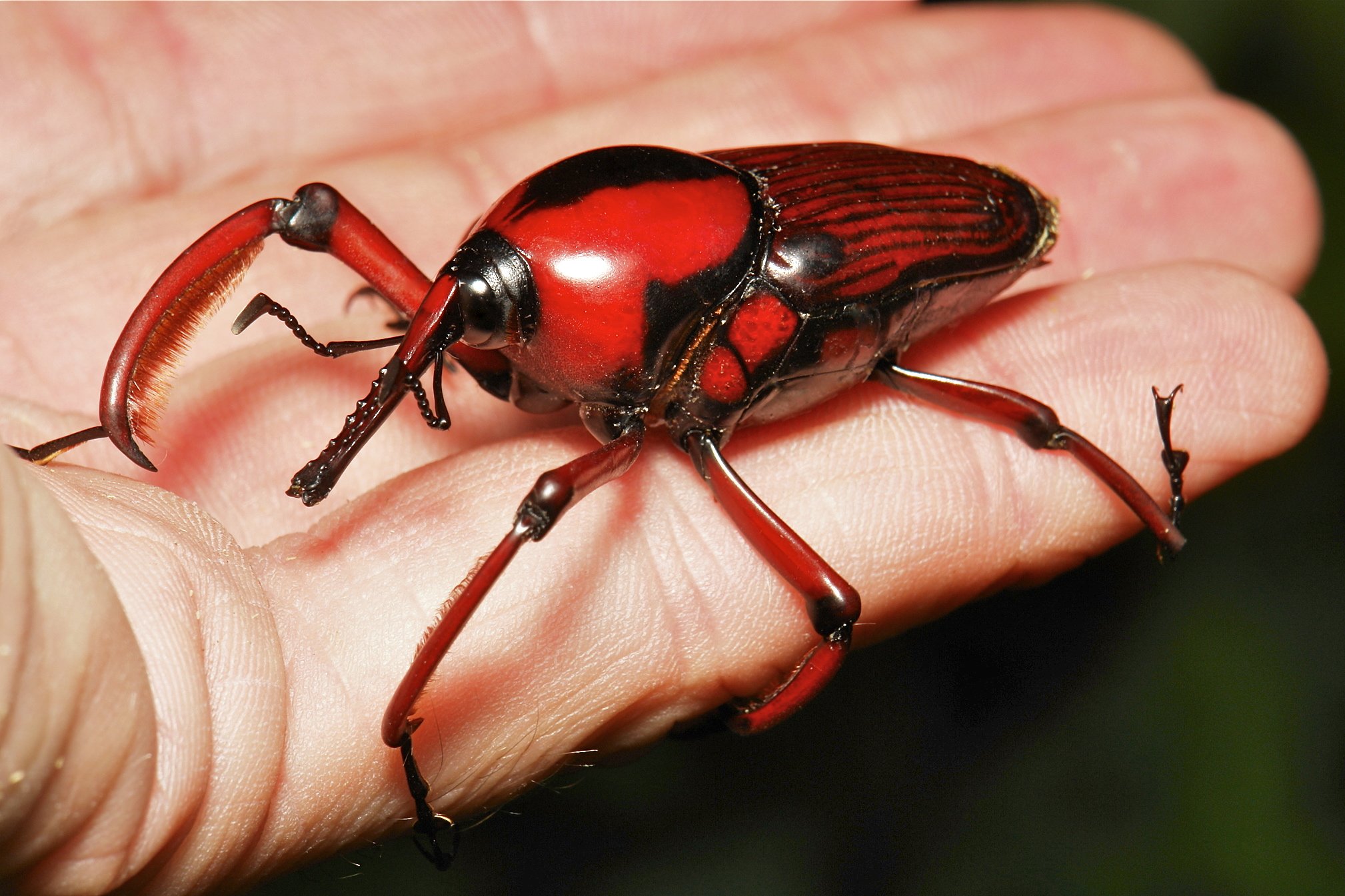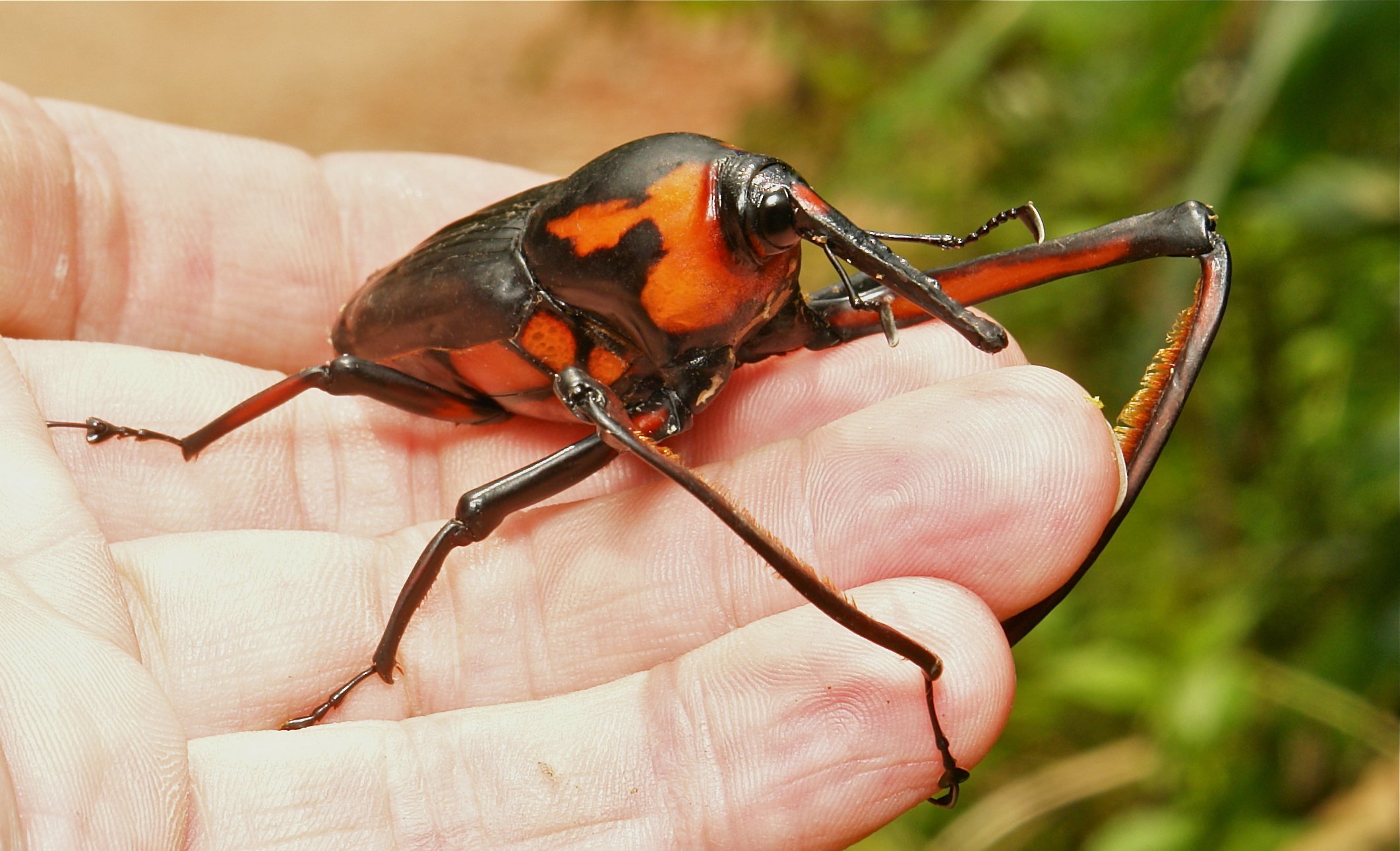Guest viewing is limited
- You have a limited number of page views remaining
- 5 guest views remaining
- Register now to remove this limitation
- Already a member? Click here to login
You are using an out of date browser. It may not display this or other websites correctly.
You should upgrade or use an alternative browser.
You should upgrade or use an alternative browser.
Curious about pet weevils?
- Thread starter Wolfman
- Start date
Goliathus
Pachnoda
Were they successful in breeding Eupholus? It's my understanding that (as is the case with most weevils) this genus is host plant specific (e.g. Selaginella spp.).I haven't really heard anyone in the States keeping weevils as pet, but I know cases in Japan and elsewhere in Asian countries keeping some jewel weevils (Eupholus spp.) as pet.
JKim
Mecynorrhina
Actually, I'm not sure. I saw some random posts on Instagram while browsing through feeds.Were they successful in breeding Eupholus? It's my understanding that (as is the case with most weevils) this genus is host plant specific (e.g. Selaginella spp.).
At the (sadly now closed) Audubon Butterfly Garden and Insectarium in New Orleans, they used to house Macrochirus praetor. I was lucky enough to go there several years ago, and yes, they did have those weevils on display when I was there. They were happily feeding on beetle jelly! As for pets, you won't be able to legally keep them in the USA. But yes, check out the photos: http://www.theonlinezoo.com/pages/malaysian_weevil.html
Goliathus
Pachnoda
I wasn't aware that the Audubon Insectarium had permanently closed - that's really unfortunate.At the (sadly now closed) Audubon Butterfly Garden and Insectarium in New Orleans, they used to house Macrochirus praetor. I was lucky enough to go there several years ago, and yes, they did have those weevils on display when I was there. They were happily feeding on beetle jelly! As for pets, you won't be able to legally keep them in the USA. But yes, check out the photos: http://www.theonlinezoo.com/pages/malaysian_weevil.html
M. praetor is a truly remarkable species - the largest member of the Curculionidae! There are also some very impressive, large species in the genus Cyrtotrachelus, such as C. longimanus -

and C. buqueti -

https://www.inaturalist.org/taxa/929579-Cyrtotrachelus-buquetii
JKim
Mecynorrhina
Wow... I had no idea they closed. I visited there just couple years ago. They must have been taking steps to close at the time then...At the (sadly now closed) Audubon Butterfly Garden and Insectarium in New Orleans, they used to house Macrochirus praetor. I was lucky enough to go there several years ago, and yes, they did have those weevils on display when I was there. They were happily feeding on beetle jelly! As for pets, you won't be able to legally keep them in the USA. But yes, check out the photos: http://www.theonlinezoo.com/pages/malaysian_weevil.html
BensBeasts1
Cerambycidae
Acorn weevils are pretty easy to breed.
Lucanus
Lucanus
It says on google that they are temporarily closed because they are moving to a new location. So not permanently closedI wasn't aware that the Audubon Insectarium had permanently closed - that's really unfortunate.
M. praetor is a truly remarkable species - the largest member of the Curculionidae! There are also some very impressive, large species in the genus Cyrtotrachelus, such as C. longimanus -
and C. buqueti -
https://www.inaturalist.org/taxa/929579-Cyrtotrachelus-buquetii
Seems you are right! Super happy! https://newsroom.audubonnatureinstitute.org/audubon-nature-institute-announces-plan-for-audubon-butterfly-garden-and-insectarium/they are temporarily closed because they are moving to a new location.
What is the scientific name for the Bean Weevils? I've only found Callosobruchus maculatus and Acanthoscelides obtectus, but it seems that neither of those are actual weevils.People do keep bean weevils and flour weevils for live food which i always found pretty cool but as someone said before me, most weevil species need a living host plant which is hard if not impossible to do in captivity
Do you know the name of the Flour Weevils? I've only found Grain Weevils: Sitophilus granarius (found only 1 source for these) and Rice Weevils: Sitophilus oryzae (haven't found a source for these).
What's their scientific name? Are you currently breeding them?Acorn weevils are pretty easy to breed.
BensBeasts1
Cerambycidae
Conotrachelus posticatus is the scientific name, I haven’t bred them before but I know multiple people on discord that had easily bred them using acorns.
I'd love it if you could compile some care info from that.Conotrachelus posticatus is the scientific name, I haven’t bred them before but I know multiple people on discord that had easily bred them using acorns.
All About Arthropods
Pupa
Roach Crossing and Will's Bug Room have S.oryzae.I've only found Grain Weevils: Sitophilus granarius (found only 1 source for these) and Rice Weevils: Sitophilus oryzae (haven't found a source for these).
Arthroverts
L3
Brr...I have trouble holding small weevils due to their incredible claws, I can't imagine trying to get one of these specimens off one's hands...I wasn't aware that the Audubon Insectarium had permanently closed - that's really unfortunate.
M. praetor is a truly remarkable species - the largest member of the Curculionidae! There are also some very impressive, large species in the genus Cyrtotrachelus, such as C. longimanus -
and C. buqueti -
https://www.inaturalist.org/taxa/929579-Cyrtotrachelus-buquetii
Thanks,
Arthroverts
JunkaiWangisme
Tenebrio
I have bean weevils, Callosobruchus maculatus for a feeder colony for some smaller assassins. As for weevils as pets, I have actually kept the larger asian bamboo weevils when I resided in China, and they adults feed on jelly fine, oviposition was difficult though, so I gave up after a few tries. Adults lives an impressive amount of time. There are some very impressive and beautiful weevil in Florida, if you really want to try this family, check them out!
And don't forget, bark beetles are also weevils! They are commonly cultured in labs, semi-social, and make beautiful wood galleries. They have an incredible diversity and some species are quite long lived. Plus - they are active right this moment statewide.
And don't forget, bark beetles are also weevils! They are commonly cultured in labs, semi-social, and make beautiful wood galleries. They have an incredible diversity and some species are quite long lived. Plus - they are active right this moment statewide.
G
Guest
Guest
I totally just found one in my sink and I’m keeping it as a pet
